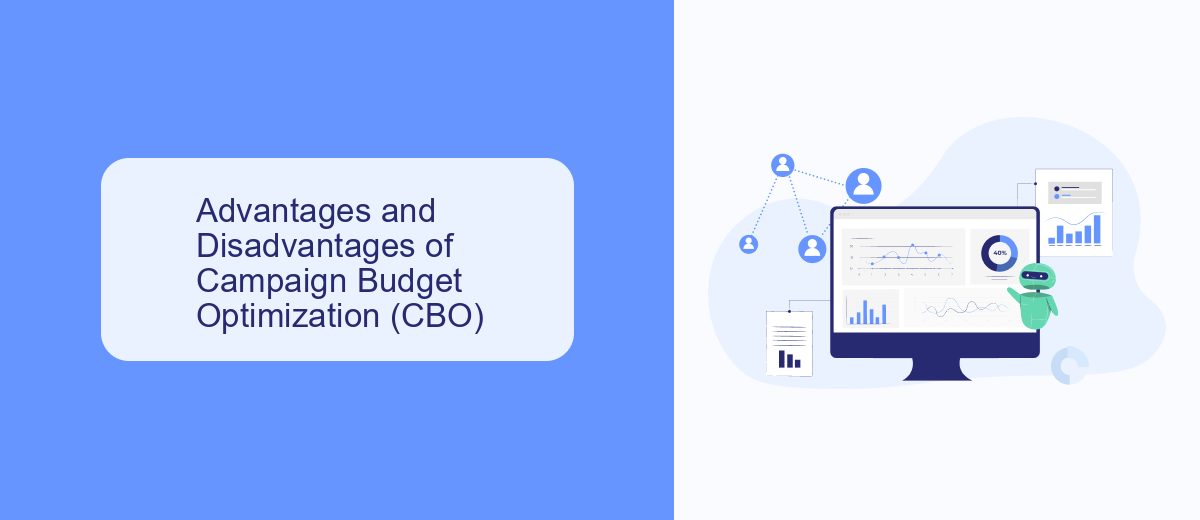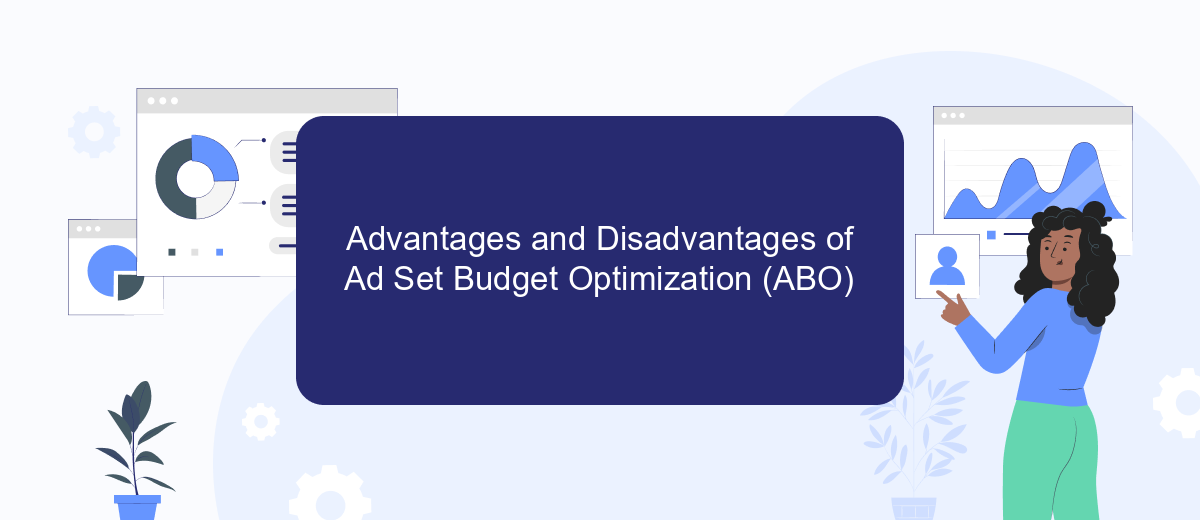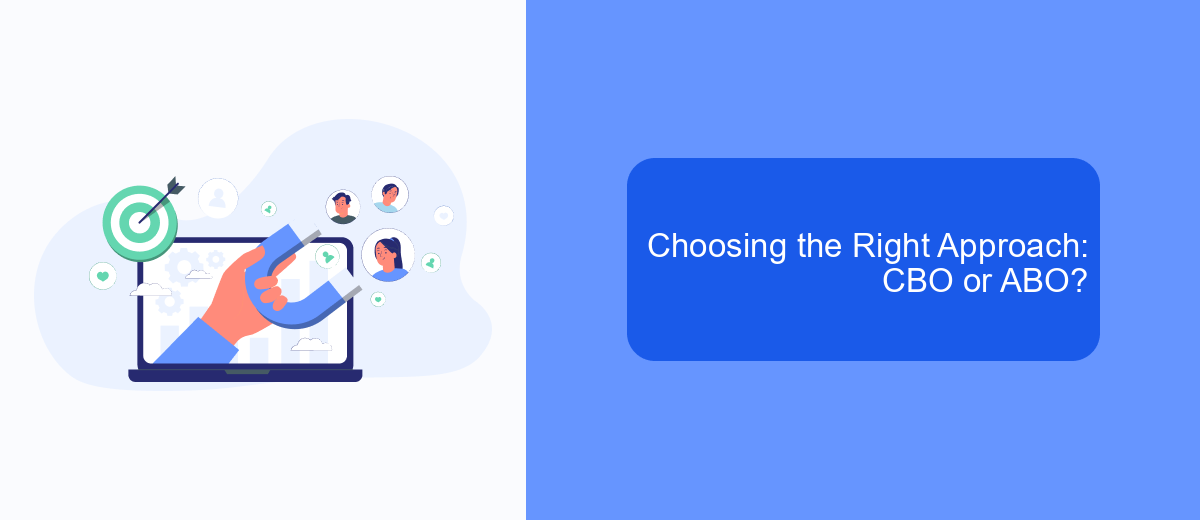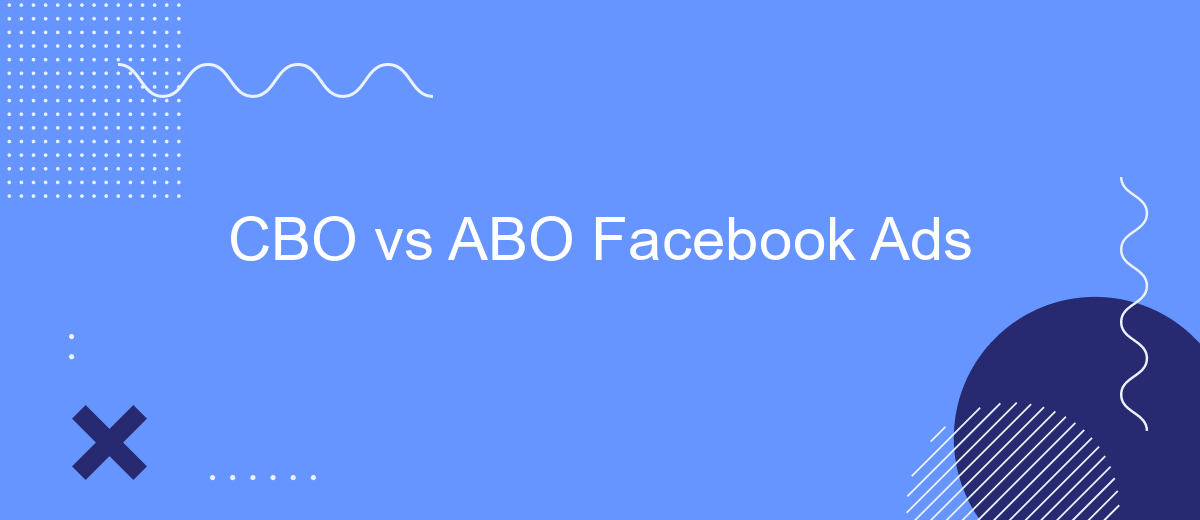In the ever-evolving landscape of digital marketing, Facebook Ads remain a crucial tool for reaching target audiences. Two prominent strategies within this realm are Campaign Budget Optimization (CBO) and Ad Set Budget Optimization (ABO). Each approach offers unique advantages and challenges, making it essential for marketers to understand their differences. This article delves into the intricacies of CBO versus ABO, helping you make informed decisions for your advertising campaigns.
Understanding the Difference: CBO vs ABO
When managing Facebook Ads, understanding the distinction between Campaign Budget Optimization (CBO) and Ad Set Budget Optimization (ABO) is crucial for effective ad strategy. Both methods have unique advantages and can significantly impact your campaign's performance, depending on your goals and resources.
- CBO: Allocates budget at the campaign level, allowing Facebook's algorithm to distribute funds across ad sets based on performance. This is ideal for maximizing results with minimal manual intervention.
- ABO: Sets the budget at the ad set level, giving advertisers more control over spending per audience segment. This is beneficial when testing specific audiences or strategies.
Choosing between CBO and ABO depends on your campaign objectives and management style. CBO is often preferred for its efficiency in leveraging Facebook's machine learning to optimize budget distribution. However, ABO offers more granular control, which can be advantageous for advertisers who want to test and refine specific ad strategies. Understanding these differences helps in making informed decisions to enhance your ad performance.
Advantages and Disadvantages of Campaign Budget Optimization (CBO)

Campaign Budget Optimization (CBO) offers several advantages, making it a popular choice for advertisers on Facebook. One significant benefit is the automation of budget allocation across ad sets, which can lead to more efficient use of resources and potentially higher returns on investment. By allowing Facebook's algorithm to determine where the budget is best spent, advertisers can save time and focus on other strategic aspects of their campaigns. Additionally, CBO can help in reducing the need for constant manual adjustments, making it easier to manage larger campaigns with multiple ad sets.
However, CBO also has its disadvantages. The reliance on Facebook's algorithm means advertisers have less control over budget distribution, which can be a drawback for those who prefer a hands-on approach. There is also a risk that the algorithm may not always align with specific campaign goals, especially for niche markets. For those looking to integrate more advanced tools to streamline their advertising processes, services like SaveMyLeads can be beneficial. They offer easy integration solutions that can enhance the effectiveness of CBO by automating lead management and ensuring seamless data flow across platforms.
Advantages and Disadvantages of Ad Set Budget Optimization (ABO)

Ad Set Budget Optimization (ABO) in Facebook Ads allows advertisers to allocate a specific budget to each ad set, providing greater control over spending. This method can be particularly beneficial for campaigns where certain ad sets are expected to perform better based on past data or strategic insights. By manually setting budgets, advertisers can ensure that high-performing ad sets receive adequate funding, potentially maximizing the overall return on investment.
- Control: ABO offers precise control over budget allocation, allowing advertisers to prioritize certain ad sets over others.
- Predictability: With fixed budgets, advertisers can better predict spending patterns and outcomes for each ad set.
- Flexibility: Advertisers can adjust budgets for individual ad sets based on performance, providing the flexibility to optimize actively.
- Complexity: Managing multiple ad set budgets can become complex and time-consuming, requiring constant monitoring and adjustments.
- Risk of Underperformance: There's a risk that some ad sets may not receive enough budget, leading to underperformance if not managed carefully.
While ABO provides enhanced control and flexibility, it demands a more hands-on approach, which can be both an advantage and a disadvantage depending on the advertiser's resources and expertise. The complexity of managing multiple budgets can be a challenge, but for those who can effectively monitor and adjust, ABO can lead to more tailored and potentially successful campaigns.
Choosing the Right Approach: CBO or ABO?

When deciding between Campaign Budget Optimization (CBO) and Ad Set Budget Optimization (ABO) for your Facebook Ads strategy, it's crucial to consider your business goals and resources. CBO automates budget allocation across ad sets, potentially maximizing efficiency by focusing on top-performing ads. Conversely, ABO gives you more control, allowing you to manually allocate budgets to each ad set.
Both approaches have their advantages and drawbacks, and your choice should align with your campaign objectives. CBO is ideal for those looking to scale quickly and efficiently, while ABO suits businesses that want granular control over their spending and performance.
- CBO: Best for businesses seeking automation and scalability.
- ABO: Suitable for those needing detailed control over budget distribution.
- Testing: Experiment with both to see which delivers better results for your specific campaigns.
Ultimately, the right choice between CBO and ABO depends on your specific needs and goals. If you're unsure, consider starting with ABO to understand your audience better, then transition to CBO as you aim to optimize and scale your campaigns. Regularly reviewing performance metrics will help you refine your strategy over time.
- Automate the work with leads from the Facebook advertising account
- Empower with integrations and instant transfer of leads
- Don't spend money on developers or integrators
- Save time by automating routine tasks
Real-World Examples and Case Studies
In a recent case study, a leading e-commerce brand switched from Ad Set Budget Optimization (ABO) to Campaign Budget Optimization (CBO) on Facebook Ads and saw a 20% increase in return on ad spend (ROAS). By allowing Facebook's algorithm to allocate budgets dynamically across ad sets, the brand experienced improved performance, particularly in reaching new audiences. This shift not only reduced manual adjustments but also allowed for more strategic scaling of successful ad sets. The brand emphasized the importance of continuous monitoring and testing to make the most of CBO's capabilities.
Another example involves a digital marketing agency that managed multiple client campaigns. Initially, they used ABO for precise budget control, but after integrating SaveMyLeads for seamless data synchronization between Facebook Ads and their CRM, they transitioned to CBO. This switch resulted in a 15% reduction in cost per acquisition (CPA) across their campaigns. SaveMyLeads played a crucial role in optimizing the workflow by automating lead data transfers, allowing the agency to focus on creative strategy and campaign performance analysis. These real-world examples highlight the potential benefits of CBO when combined with effective tools and strategies.
FAQ
What is the main difference between CBO and ABO in Facebook Ads?
When should I use CBO over ABO?
Can I switch from ABO to CBO during a campaign?
How does CBO impact campaign performance?
What tools can help automate and integrate Facebook Ads management?
What do you do with the data you get from Facebook lead forms? Do you send them to the manager, add them to mailing services, transfer them to the CRM system, use them to implement feedback? Automate all of these processes with the SaveMyLeads online connector. Create integrations so that new Facebook leads are automatically transferred to instant messengers, mailing services, task managers and other tools. Save yourself and your company's employees from routine work.

